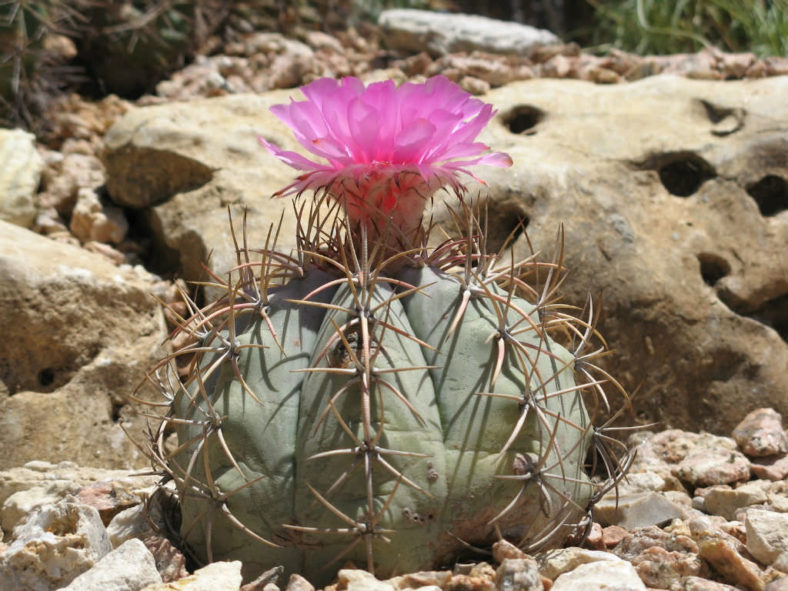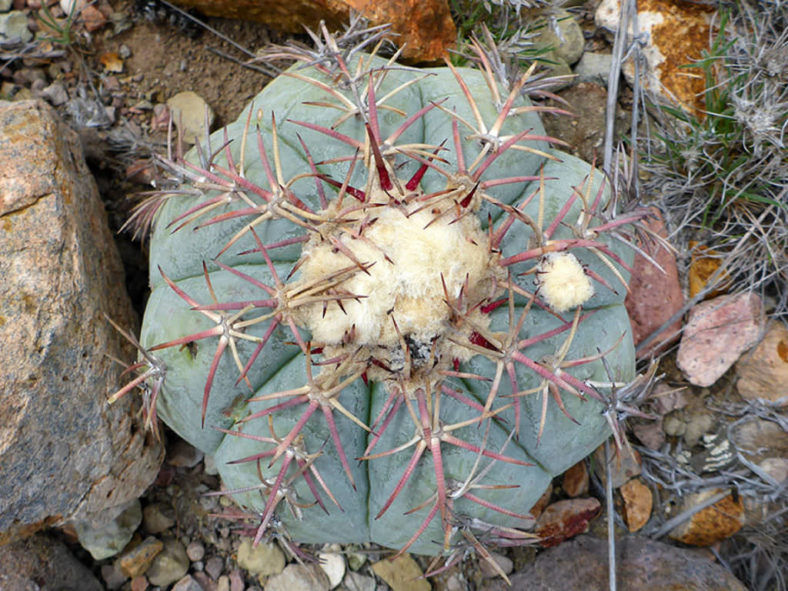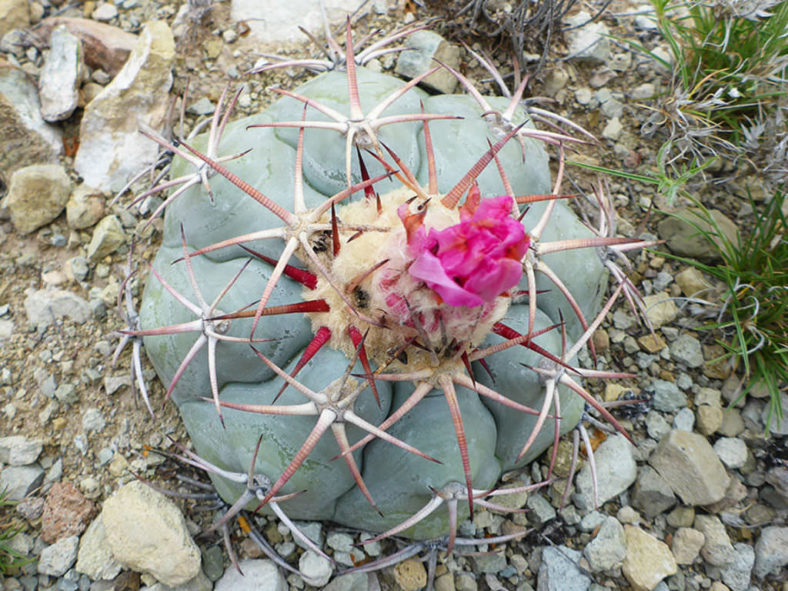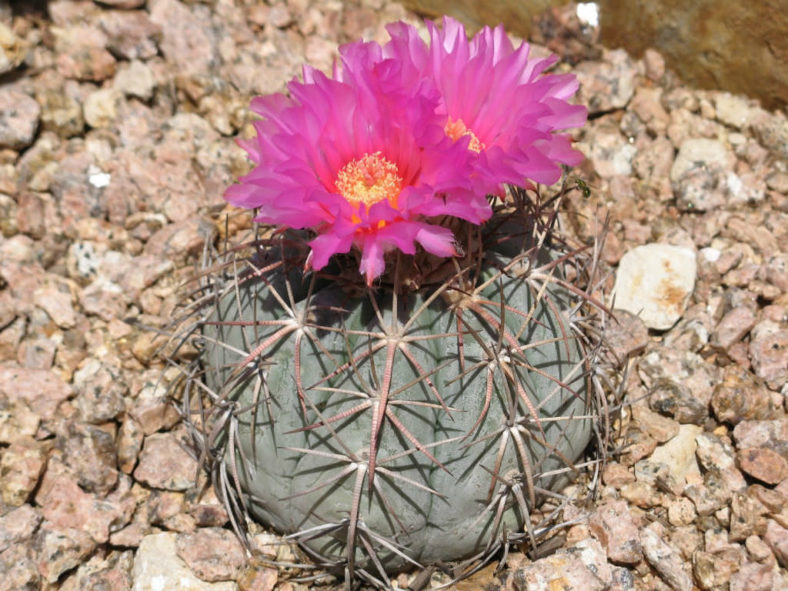Scientific Name
Echinocactus horizonthalonius Lem.
Common Name(s)
Blue Barrel Cactus, Devilshead, Devil-head Cactus, Devil's Head Cactus, Eagle's Claw, Eagle-claw Cactus, Eagle's Claw Cactus, Horse Crippler, Horse Maimer, Silverbell Cactus, Turk's Head, Turk's Head Cactus
Synonym(s)
Echinocactus horizonthalonius subsp. horizonthalonius, Meyerocactus horizonthalonius
Scientific Classification
Family: Cactaceae
Subfamily: Cactoideae
Tribe: Cacteae
Genus: Echinocactus
Origin
Echinocactus horizonthalonius is native to the southwestern United States and central Mexico.
Description
Echinocactus horizonthalonius is an attractive, slow-growing cactus with a flat-topped or hemispherical, usually solitary stem with 5 to 13 broad ribs lined with areoles that bear clusters of stiff spines. The stem ranges from pale gray-green to bright gray-blue and can grow up to 18 inches (45 cm) tall and 8 inches (20 cm) in diameter, but is usually smaller. The ribs are vertical to helically curving around the stem. The spines are loosely projecting or strongly decurved, more or less flattened, reaching up to 1.7 inches (4.3 cm) in length. They can be gray, pink, tan, or brown. Each areole bears 5 to 8 radial spines growing close to the body and 1 to 3 central spines pointing downwards.
The flowers are rose-pink or magenta, measuring up to 2.8 inches (7 cm) long and 3.8 inches (9.5 cm) in diameter, and appear at the top of the stems in early summer. They open around midday and close for the night. The fruits are pink or red, spherical to ovoid-cylindrical, about 1.2 inches (3 cm) in diameter, partly or entirely hidden by hairs of stem apex, and contain black or gray seeds.

Hardiness
USDA hardiness zones 8b to 10b: from 15 °F (−9.4 °C) to 40 °F (+4.4 °C).
How to Grow and Care
These cacti do best in a sunny window, perhaps a southern exposure. Plants that do not get enough sunlight will grow more slowly and fail to thrive.
It is critical never to let these cacti be exposed to prolonged periods in water or even very high humidity. They will suffer from rot in the presence of humidity.
Echinocactus are vulnerable to pests, including aphids, mealybugs, scale, and whiteflies. Identify the infestation as early as possible and treat it with the leave-toxic option.
It is best to repot at the beginning of the growing season or summer. To repot a cactus, ensure the soil is dry before repotting, then gently remove the pot. Knock away the old soil from the roots, removing any rotted or dead roots.
Learn more at How to Grow and Care for Echinocactus.
Links
- Back to genus Echinocactus
- Succupedia: Browse succulents by Scientific Name, Common Name, Genus, Family, USDA Hardiness Zone, Origin, or cacti by Genus
Photo Gallery
Click on a photo to see a larger version.


